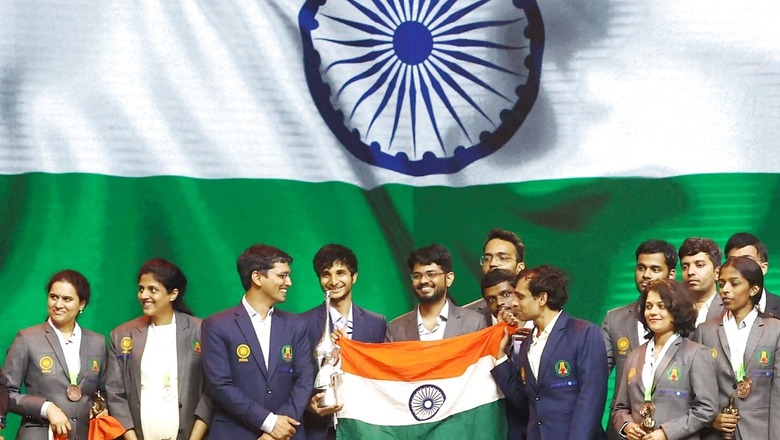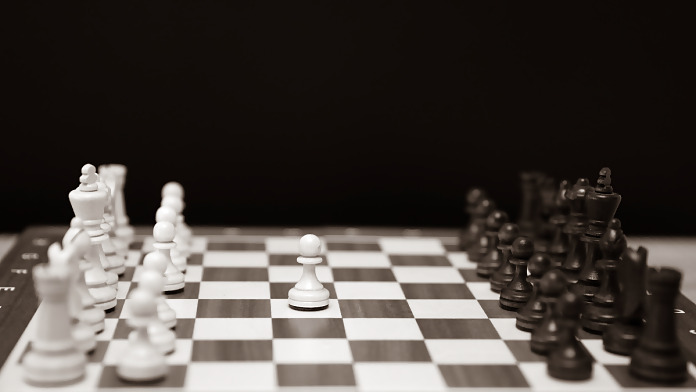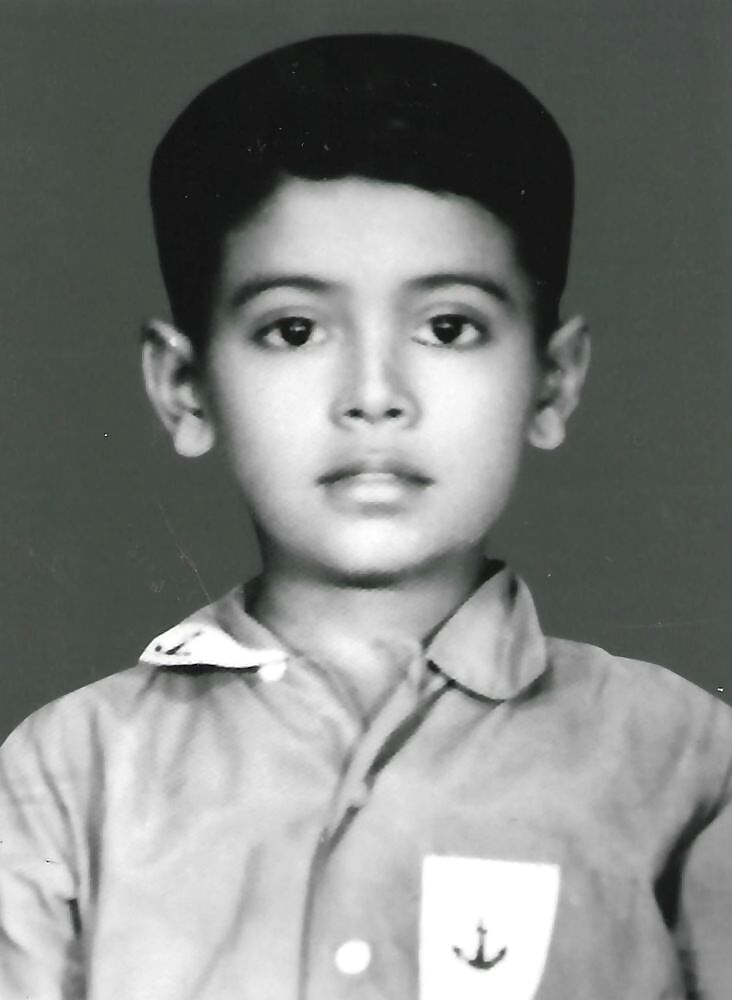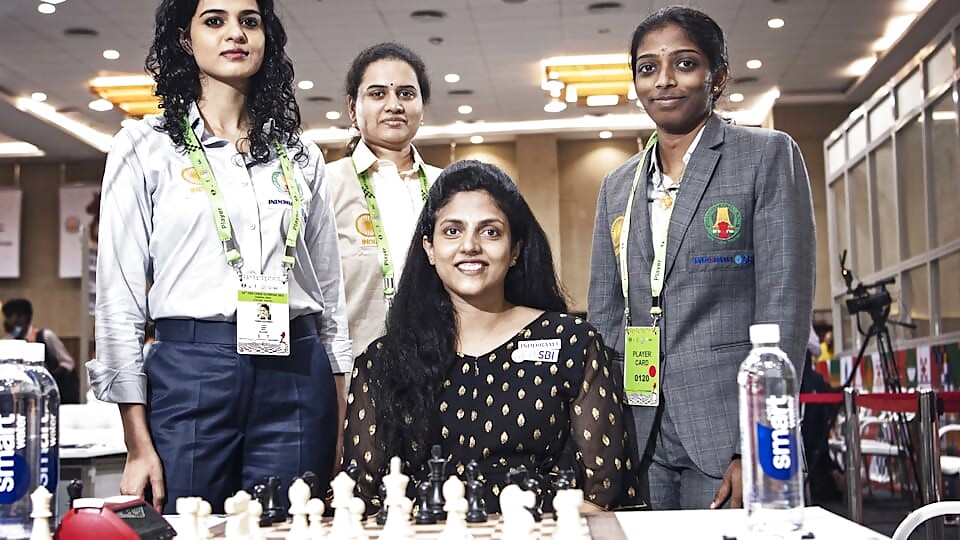
views
As the clock heralded the arrival of the year 2023, a new shining star emerged over the horizon of the Indian sky- “19-year-old Koustav Chatterjee”. When on the last day of 2022, he drew with Grandmaster Mitrabha Guha in the tenth round of the 59th National Senior Chess Championship at New Delhi, Koustav became India’s 78th Grandmaster.

After Covid-19 imposed chaos, Koustav earned his first GM norm in October 2021 at Sheikh Russel GM’s meet in Bangladesh, earned the second at Asian Championship in November 2022 and was awaiting the final norm after crossing the FIDE magic rating of 2500.
It was not until 1988 that India got its first chess grandmaster. What a transformation!
IT ALL BEGAN HERE

Few opine that chess was invented by early Egyptians. But the consensus is, the game that Egyptians played was not chess, it was totally different from the chess we know.
Chess started with Chaturanga.
The world, at large, accepts Indian chaturanga as the precursor of modern chess, because of the different piece abilities and win condition being the capture of a singular piece– The King.
Like modern chess, chaturanga was played on an 8 x 8 grid. The pieces were similar, although the moves were different, and there were some rules which were not invented. However, chess did evolve from chaturanga, many of whose rules were akin to modern chess, with few differences like – rules which allowed limited ability for moving queens (then called counselors) and bishops (then called elephants). Another difference was in the way the foot soldier (the pawn in chess) could be promoted. Most historians concur players could not choose to promote any piece.
Nonetheless, the objective of chaturanga was somewhat different from modern chess. In chaturanga, a player could win by removing all his enemy’s pieces besides the king. Chess historians also suggest that there was no checkmate; thus, the king had to be necessarily captured to win.
While there is broad consensus that chaturanga was the rightful ancestor of modern chess, there is no clarity on who invented it. Beyond that, the emergence of chess is consensually traced to 6th century India during the Gupta period.
THE LEGEND
The legend is, in the court of the tyrant Indian king Shihram was a wise man who invented chess to prove to the king that every subject in his kingdom mattered. To prove his point, the wise man created a game around queens, rooks, bishops, knights and pawns, just like people on whom the king depended in real life.
After he fathomed the brilliant logic of the wise man, the king — mesmerized by the game — mastered it and encouraged his subjects to play the same. And pleased that he was, he offered hordes of gold as a reward to the wise man, which the latter declined. Instead, the wise man asked the king to fulfill a wish — “to place one grain of wheat on square one, two on second and keep doubling until the last square. Initially, the king was disappointed, but while filling the chessboard with grains of wheat, soon he realized the mistake of undermining small things. Because of an exponential increase, the number of wheat grains increased to 1,84,46,744 trillion, way beyond the capacity of any kingdom to ever fulfill!
THE FIRST CHESS KINGDOM
Indubitably, India was the first chess kingdom.
As per Encyclopedia Britannica, “Chess first appeared in about 6th century AD in India. And by the 10th century, it had spread to Asia (China, Japan, and Southeast Asia), where it evolved into the related games xiangqi and shogi, and the Middle East (via Persia)”.
During this period also emerged initial scholarly studies of chess, analysing problems and openings.
CHESS GETS MODERN IN EUROPE
Piggybacking the global trade, chess entered Europe around 1200 AD, where it underwent a radical transformation to become the game it is today.
European innovations included checkered chessboards and the name change of various pieces to reflect medieval European figures like knights, bishops, and rooks, apart from rule changes like enabling pawns to move two spaces on the first move, the development of castling making it easier to protect the king early on, bishops asserting their dominance over diagonals and queen finding its ability to move anywhere.
The emergence of the modern chess theory is attributed to European players – Spanish Ruy Lopez de Segura and Frenchman Andre Danican Philidor – who first analysed principles of various opening and endgame situations.
Western Europe, particularly England and France, took actively to chess in the 18th century, and matches entered the coffee houses on the streets of London and Paris. But it became popular only in the 19th and early 20th centuries.
CHESS – A COMPETITIVE SPORT
Chess became a competitive sport in the 19th century with the emergence of chess clubs and became a fixture in modern European life. Around this time, newspapers too began carrying chess problems.
In 1851, the first international chess tournament held in London was won by German Karl Ernst Adolf Anderssen, who also gets the credit for popularising modern chess problems. He also won the great international tournament of 1862, but lost matches to American prodigy Paul Morphy in 1858, and to Austrian Wilhelm Steinitz in 1866. He also popularised modern timekeeping, seated move and speed chess.
The first World Chess Championship held in 1886 was won by Wilhelm Steinitz (who later emigrated to America). An exemplary exponent of the aggressive style of chess, he also popularised the positional style that would come to dominate in the 20th century.
The first player with a long reign as the world chess champion was German mathematician Emanuel Lasker, who reigned the global chessboard for 27 years from 1894 to 1920. The first USA chess prodigy was Paul Morphy, born in 1837. Americans and Europeans both hail Morphy as the greatest chess master of his era and he is often considered the unofficial World Chess Champion. A young chess prodigy, he was called the “Pride and Sorrow of Chess” because, despite a brilliant chess career, he retired from the game while still young. Morphy is long dead, but he is one player Viswanathan Anand wishes to play with.
In USSR, World Champion Mikhail Botvinnik proved chief motivator for a generation of chess players that led to the Soviet Union turning into a chess powerhouse.
WE ARE ONE FAMILY
When International Chess Federation (FIDE) was founded in 1924 in Paris (now headquartered in Lausanne) with the motto Gens una Sumus (Latin for We are one Family), it was one of the very first International Sports Federations. FIDE standardised rules of chess and international competitions.
The early 20th century also witnessed the development of chess theory, which introduced radically new styles of play. After World War II, for long during the Cold War era, chess was a battleground for intellectual supremacy between the Soviet Union and the US, a war that largely USSR won.
CHESS RETURNS TO INDIA
Famous Hindi writer Munshi Premchand penned a classic short story Shatranj Ke Khiladi (1924), a tale about Indian aristocrats mad after chess. The riveting story ends with the British capturing Nawab Wajid Ali Shah and annexing Awadh. At one point in the story, Mir and Mirza, addicted to Shatranj, allow Nawab Wajid Ali Shah to be captured and imprisoned, and shout “first save your king then mourn for the Nawab”. And as the story ends, Mir and Mirza — who did not leave Shatranj to save Nawab of Awadh and did not shed a drop of tear for the Nawab — kill each other for Shatranj Ka Wazir- “The Queen”. The depiction of Shatranj Ke Khiladi was so captivating that in 1977, Satyajit Ray made a film with the same name.
With such obsession of India’s aristocracy to chess (shatranj), it is not surprising that in the early 20th century, Harold James Ruthven Murray, British educationalist and prominent chess historian, in his most authoritative and comprehensive treatise A History of Chess (1913) firmly established that “chess was born in India 1500 years ago”.
It is surprising then that in post-independence India, the game of chess mysteriously vanished from the national sporting conscience except in Shatranj Ke Khiladi by Premchand.
THE FORGOTTEN AND UNSUNG TRAILBLAZERS
Nonetheless, chess reappeared on the Indian scene when the first chess trailblazer surfaced. Lo and behold, it was not Viswanathan Anand in 1988. It was Manuel Aaron, the prototype trailblazer, the first chess superstar of India. He was the first Indian to become International Chess Master in 1961 and the first chess player to be conferred Arjuna Award in 1962, 24 years ahead of Viswanathan Anand.
Early in Aaron’s life, his father asked him about his intense love for chess “Unnaku soar poduma (will this feed you)?” But undeterred, Aaron made chess his fodder (and it did feed him, chess gave him a job at an Indian bank). In 1961, he soared high as India’s first International Chess Master after winning titles that made him number 1 in Asia and he remained on that lonely planet for decades. India could not produce another International Master at least for 20 years.
Aaron cemented his position as India’s chess superstar, dominating it for two decades and winning the national championship record nine times, including five consecutive titles between 1969 and 1973. He also played in three chess Olympiads, captaining India in two.
On retirement, Aaron founded Tal Chess Club (named after Mikhail Tal, USSR eighth world champion and Aaron’s chess hero) in Chennai in 1982. And young Viswanathan Anand attended Aaron’s chess lectures at that club. It is famously said that in 2012 after Anand beat Boris Gelfand at World Championship in Moscow, Russian President Vladimir Putin asked him where he had trained. When he replied that it was at the Tal Club in Chennai’s Soviet Centre, Putin remarked that Anand was a problem they had brought upon themselves.
This was Aaron’s small contribution in the making of Anand, the Pele of India’s Chess.
It is unsurprising then, according to FIDE, as of 2023, of 78 Grandmasters in India, 17 are from Chennai and of the five Indian players in top 55 in the world, two are from Chennai. And that the first four Indian chess International Masters were from Madras.
The immense contribution of Manuel Aaron to Indian chess as a player, arbiter, journalist, organiser and administrator remains unparalleled. Aaron edits Chess Mate, a monthly chess magazine he founded in 1983. He has also authored six books on chess, including Tamil Chess and Indian Chess History: 570 AD – 2010 AD (co-authored with chess historian Vijay D Pandit).
It is a travesty of the nation that 86-year Aaron was never considered for a national honour — the Padma Awards, though in 1962, he became the first chess player to be conferred with the Arjuna Award.
It is time for Manuel Aaron’s contribution to the rise of Indian chess to be rewritten.
THE NEW KID ON THE BLOCK
The timeline was Circa 1975-1976. My interest in chess was recently kindled by Nagaswamy Nagmani, a senior IAS officer of Bihar cadre, then state Irrigation Commissioner and I dreamt of becoming a good chess player. Soon, destiny gave me chance to witness India’s greatest chess players in action at Patna college’s common room, where the 1975 National Chess Championship-B and the 1976 National Chess Championship-A were held. Those days, National Chess Championship was played in two tiers — A and B, the top 14 players from tier B vied for the crown in tier A.
In 1976, Aaron “crowned king” of Indian Chess (having won the national championship record 7 times), awaited re-coronation at Patna.
But it was not to be.
A new kid had arrived, the second and not-so-well-known trailblazer of Indian chess. Raja Ravi Shekhar was born in 1954, started playing chess only in 1972, and stunned chess pundits by winning the National Junior Championship in 1974.
On a roll, he stunned the stalwarts of Indian chess in the 1975 National Championship-B by winning it, and in 1976 lifted “National-A Crown” dethroning Aaron, the king.
In Straight Talk with Shahid podcast at ChessBase, Raja says about winning National-B and National-A championships back-to-back (a record then), “There were no coaches at that time. I used to learn on my own. I was playing continuously. Continuous practice makes a player perfect, getting rid of errors by practice.”

I witnessed every match on every board in 1975 (National-B) and 1976 (National-A) trying to decipher, understand and internalise, often unsuccessfully, the moves and countermoves of the only board game I would ever play. In the process, I was witness to history being scripted by Raja. He became a national champion 10 years before Viswanathan Anand won his first national championship. Aaron reclaimed his throne back from Raja in 1977 in Calcutta. Raja won it back in 1979 in Vijayawada, but not to be outdone, Aaron, again became champion in 1981 in Delhi, his 9th and last.
Raja went on to represent India in six Olympiads and holds the record of playing in 16 continuous National Chess Championships-A from 1975 to 1990.
THE CARPENTER CHECKMATES
The third forgotten trailblazer of Indian chess is the unsung Rafiq Khan. I was witness to Rafiq securing second place only behind Raja Ravi Sekhar at the 13th National ‘B’ in Patna in 1975. Next year in Calcutta, in the 14th National ‘B’ championship, Rafiq scripted history by scoring 11 wins (nine back-to-back)! Once he sat on the first board, he remained there until the end conceding only four draws and winning the championship with a massive 13 points! This record of Rafiq Khan sits to date in the record books. No one has dominated a chess tournament event the way he did in 1976, a feat which stunned the chess fraternity. Rafiq was anointed national champion when he won the 17th National Championship ‘A’ in Cochin in 1978, despite a star-studded field comprising Manual Aaron, Raja Ravi Sekhar, Parameswaran and Nasir Ali.
But who was Rafiq Khan?
He was a “desi chess” player (the rules of desi chess are different from international chess, like the pawn moves only one square forward instead of two) who had learned the rules of International chess hardly six months before the 1975 National B Championship. Even during the B championship in Patna, Rafiq was reluctant to move pawns to two squares and invariably began the game with strange pieces and pawns configuration. But he not only defended his position surprisingly well in each game but even exploited, overextended and weakened the position of his adversaries to win.
A carpenter par excellence?
Rafiq Khan was considered, by many, as the greatest natural talent that Indian chess witnessed in the 70s and 80s, but he did not sit on laurels. In 1980, at Malta Chess Olympiad, he stunned the world by becoming the first Indian to win an individual medal- a silver medal on board. Rafiq, much before the present crop of Grand Masters, gave the message– “Indians could win against the best in the world”. To paraphrase Grandmaster Pravin Thipsay, “An individual medal at Olympiad to a non-European was something no one could even dream of and yet Rafiq achieved it!” In Malta, Rafiq scored incredible 10 points out of a maximum of 13 with nine wins, two draws and two losses.
Why I keep harping- carpenter, carpenter, carpenter. Because that is what Rafiq was?
The son of a carpenter living in penury from Bhopal and without formal education, Rafiq took to carpentry for survival. After long days of work as a carpenter, tired and famished Rafiq would visit a tea stall nearby where he would watch local chess aficionados playing chess. And thus ignited his hunger for chess.
Despite emaciating and punishing day schedule as a carpenter, Rafiq started playing desi chess for an hour daily before crashing to bed. And thus, was born India’s first chess Olympiad medallist. But for the timely intervention of a British tabloid and India’s then Industries Minister, the indomitable George Fernandes, who got Rafiq a job in BHEL, the chess career of carpenter Rafiq would have died before he gave India the first Olympiad medal.
Rafiq, the unsung hero of Indian chess, went to the afterworld on 19 July 2019 aged 73. But he has left a legacy and a void. It is a travesty that in chess-loving 21st-century India, the name of Mohammad Rafiq Khan has quietly faded in the annals of history without any trace, not even in the books of chess legacy of the nation.
No awards, no rewards, Rafiq just exited the Earth, unsung and unnamed.
It is a travesty that in 1980, when he became the first Indian to bring a chess Olympiad medal to the country, cricketer Chetan Chauhan who could not score a century in 40 tests he played for India was conferred Arjuna Award and his opening partner, Sunil Gavaskar, the batting great, was conferred Padma Bhushan same year.
THE GRANDSTAND
The galaxy of chess has around 2000 grandmasters and in the pecking order of number of grandmasters, India is ranked fifth behind Russia, the USA, Ukraine and Germany. Only Russia and the US have more than 100 grandmasters, but India is raring to join the club. It has already breached the glass ceiling in FIDE country ratings, standing tall at third place behind the USA and Russia.
AND THE WINNER IS
In the annals of Indian chess history, 2022 will be reckoned as the golden year. It was the year India successfully hosted the 44th edition of the FIDE Chess Olympiad 2022 at Mamallapuram, Tamil Nadu, where India won a record nine medals. But the icing on the cake was the women’s team’s bronze medal — the first-ever for India in the women’s section. India A team (Koneru Humpy, R Vaishali, Tania Sachdev and Bhakti Kulkarni) secured the bronze medal.
And there was more.
In the Open section, the young India B team (Gukesh, Nihal Sarin, Praggnanandhaa and Raunak Sadhwani) gave India the second bronze medal after thrashing Germany 3-1. India won the first bronze in 2014.
Not to be outdone, seven Indians won individual medals- D Gukesh and Nihal Sarin got gold on men’s board 1 and board 2 respectively, Arjun Erigaisi got silver on board 3 and Praggnanandhaa (men’s board 3) won bronze. Indian girls, Vaishali (women’s board 3), Tania (women’s board 3) and Divya (women’s reserve board) won individual bronze medals.

And what a performance.
India also won the prestigious Gaprindashvili Cup, awarded to a nation for best collective performance in both open and women’s sections. And how difficult was the field- 350 teams in open and women’s sections from 187 countries competed in the 2022 Olympiad.
HOW DID IT HAPPEN
Even for sports lovers of my generation, “India’s Chess Hall of Fame” begins with Viswanathan Anand. He is on the same pedestal for Indian chess, where Sachin Tendulkar is to cricket, Pele to football and Mohammad Ali to boxing.
I will return to the “Anand Effect” a bit later.
But let the credit begin where it must. The forgotten or unsung heroes- Manual Aaron, Raja Ravi Sekhar and Rafiq Khan, names which do not mean much to Indians, but who were an inspiration and a beacon of hope for the current crop of Indian chess prodigies, including Viswanathan Anand.
THE ANAND EFFECT
Let me begin with an unpalatable comparison. India, soon to be the world’s most populous country with 142 crore population, has 78 grandmasters. Contrast it with the tiny nation Iceland with a 3.8 lakh population, it has 14 grandmasters.
Nonetheless, starting late on the starting line, India has arrived at par on the chess course.
After four decades of independence, India did not have a single grandmaster and in the 50th year, it had just three- Viswanathan Anand became a GM in 1988, Dibyendu Barua in 1991 and Pravin Thipsay in 1997.
Come the 75th year of Independence, the number of Chess Grand Masters in India soared to 75 with the latest tally at 78. Indubitably, India, the country which gave chess to the world has ‘checkmated’ again. India is the Chess Grandmaster of the world today. Make no mistake, it is the most laudable sporting success story of Independent India.
It is more creditable that in the year 2000, at the dawn of the current millennium, India had just three grandmasters- Anand, Barua and Thipsay. But since then, India has added 75 grandmasters, starting with Abhijit Kunte and K Shashikiran in 2000 and ending with Bharath Subramaniyam, Rahul Srivatshav, V Pranav, Pranav Anand, Aditya Mittal and Koustav Chatterjee in 2022.
In the past two decades, on average, India produced 3.5 grandmasters every year — in the last decade 4.8 per year, in the last five years 5.6 per year and in 2022, six grandmasters.
It is as good as it can go. But Yeh Dil Mange More!
And my wish is not a castle made of sand. Here is why I see a rosier future for Indian chess-
One- the “Anand Factor”. Manuel Aaron was an inspiration to players of Anand’s generation, but Anand, the “Lightning Kid of India” gets the credit for Khelo Chess- Khelo India, Khelo Bharat. It all started in 1991 with Anand winning his first major international chess tournament, finishing ahead of world champion Garry Kasparov and former world champion Anatoly Karpov.
In 2000, Anand first the won 2000 FIDE World Chess Championship. But the Anand era truly began in 2007, when he became the classical world champion and his reign on top continued till 2013 when he ceded the pole position to Magnus Carlsen. And what an incredible achievement! Since 1886, only 20 players have held the official title of world champion, 16 of whom have held the “classical” title. The classical champion is decided in a match between a sitting champion and a challenger. It has a linear progression, with each champion reigning until displaced. Anand, the classical champion from 2007-2013, has been the guiding light for the ascendency of Indian chess.
I wonder where the nation would have been without the “Anand Effect”. I keep daydreaming about when Anand, the winner of the “Khel Ratna Award” (1991-92) and the “Padma Vibhushan” (2008), will get the “Bharat Ratna”.
Two- “broad basing of chess”. The first International Master (Aaron, 1961) and first grandmaster (Anand, 1988) hailed from Tamil Nadu. Since then, there has been grandstand broad basing of the game. Every year, the list of states having produced a grandmaster is proliferating, already enlarged to 13 (Tamil Nadu, West Bengal, Maharashtra, Andhra Pradesh, Gujarat, Delhi, Kerala, Rajasthan, Odisha, Haryana, Goa, Karnataka, and Telangana) with Tamil Nadu, Maharashtra and West Bengal leading the pack. Even Goa has two grandmasters. It is time for chess to be mainstreamed in the Hindi heartland, where it originated.
Three, chess is not only getting broad-based, but Indian chess prodigies are getting younger. It bodes well for the future of Indian chess. When they became grandmasters- Gukesh Dommaraju was 12 years, 7 months, 17 days (India’s youngest); Praggnanandhaa Rameshbabu was 12 years, 10 months, 13 days; Parimarjan Negi was 13 years, 4 months, 22 days, and Raunak Sadhwani was 13 years, 9 months, 28 days.
Four- it is “no longer boys club only”. Koneru Humpy, R Vaishali, Tania Sachdev, Bhakti Kulkarni, and Divya Deshmukh- all winners of medals in the just concluded Chess Olympiad have already become beacons of hope for the emergence of Indian girls at the global chess map, and as tomorrow comes, there will be more joining ranks.
Five- “The Next Anand” — Another future world champion waiting in the wings. Anand admits early in life, he was trained by Manuel Aaron. In Aaron’s own words, Anand was too good to be trained. The question I ask is– who will be the next Anand?
In WestBridge Anand Chess Academy (WACA), which Anand set up in 2020, he is personally supervising the training of Indian chess prodigies, including 15-year-old R Praggnanandhaa (aged 15), Nihal Sarin (16), Raunak Sadhwani (15), D Gukesh (14) and R Vaishali (19), who is Praggnanandhaa sister. It will be unsurprising that the “next Anand” may soon come out of his academy.
Akhileshwar Sahay is a multi-disciplinary thought leader and India-based International Impact Consultant. He is an avid chess fan. Views expressed are personal.
Read all the Latest Opinions here














Comments
0 comment